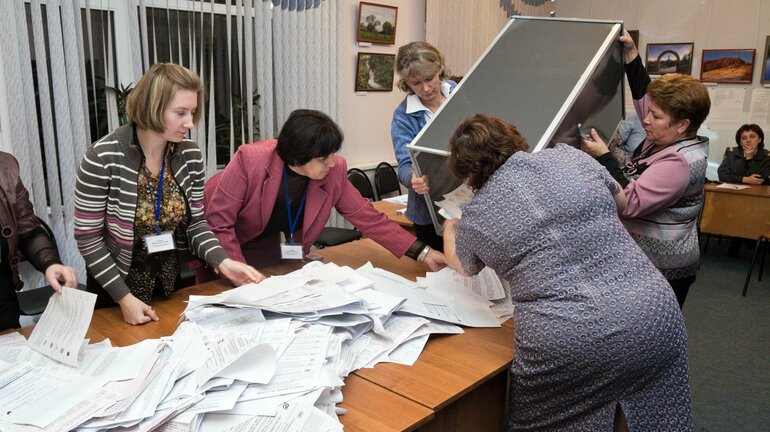Managing regional elections in Russia

On 10 September, elections to provincial assemblies, municipal councils, and regional executive positions were held in a number of Russia’s regions; by-elections to the State Duma were also held in two regions. The elections brought few surprises. As expected, pro-Kremlin United Russia (UR) party candidates claimed victory in most of the contested seats in the six regional legislatures for which elections were held—240 of the 309 regional council mandates and 101 of the 119 single-member districts.
However, opposition candidates secured significant gains in municipal districts in a number of district-level assemblies in the City of Moscow. Out of a total of 1,502 deputies elected to the district councils in Moscow, 266, or roughly 18 per cent, represent the so-called Gudkov list of independent and opposition party candidates organised into an umbrella alliance of United Democrats led by activist Dmitry Gudkov.
A degree of contestation
Although hailed as a successful outcome for the opposition, these results are consistent with the historically strong showing of pro-democracy or otherwise antisystemic parties in Moscow’s municipalities. In 2013, the charismatic lawyer and anticorruption activist Alexei Navalny ran for the post of Moscow mayor. By many accounts, the regime did not anticipate the strong support that Navalny received from Moscow’s electorate. But the fact that Navalny had not been excluded from the race reflected the traditionally higher degree of tolerance for liberal parties and candidates in Russia’s capital.
As with previous mayoral and council electoral races, allowing space for some contestation for antiregime activists is as important for Russian president Vladimir Putin’s political strategy as the wider agenda of excluding opposition representatives from running for seats in the State Duma and barring candidates from competing in presidential races.
Another reason for allowing some space for political contestation in large cities like Moscow is the record of large-scale electoral protests in 2011–12. Even though most citizens do not routinely engage in politicised protest targeting the regime, urban civic activism is a widespread phenomenon in Russia. As researchers analysing Russian civic protests have pointed out, in mobilising against corrupt local officials, unscrupulous developers, or reckless state bodies, citizens are building networks and alliances with fellow grassroots activists and local councillors.
Bread-and-butter protests spurred by wage arrears, falling standards of living, and poor public services have also been on the rise in Russia in recent months. In fashioning its electoral strategy, the regime is conscious of the potential of blatant pre-electoral manipulation and election-day fraud to bring people to the streets in large urban centres.
Evidence of manipulation
There is strong evidence that in the 10 September elections, the regime expended considerable effort in manipulating the electoral turnout and vote. Ella Pamfilova, Russia’s Central Electoral Commission chief, reported over 500 calls to the commission’s hotline with complaints about electoral manipulations in Moscow alone. Together with Saratov, where elections to the regional chief executive and assembly took place, Moscow emerged among the leaders in citizen complaints of electoral malpractice.
Elsewhere, regional officials resorted to tactics of intimidation and harassment of observers, material inducements to pensioners to vote for UR candidates, vote buying, and other forms of electoral manipulation and fraud that had been tried and tested in previous races—or invented new tactics that may be applied in the March 2018 presidential election.
In Sverdlovsk oblast, suspicious turnout patterns were reported in the election to the post of regional governor. Governor elections in Russia were abolished in 2004 but reinstated in 2012, albeit with a new system of a municipal filter that required candidates to obtain the signatures of a proportion of council deputies as a precondition for running. The mayor of the regional capital Ekaterinburg, Yevgeny Roizman, a prominent opposition figure, called for citizens to boycott the elections; turnout rates were low in the city.
Malpractice on the rise
Electoral malpractice in regions with significant popular support for antiregime opposition is a growing trend in Russia’s electoral landscape. Scholars have aptly characterised this tendency of electoral manipulations to spread across regions and over successive elections as ‘metastasised fraud’. Some regions, however, have consistently delivered high turnout rates and a high share of the popular vote for Kremlin-supported parties or candidates. These tend to be regions traditionally reliant on fiscal handouts from Moscow or those in which managers of large enterprises mobilise the workforce to vote for Kremlin-supported candidates or parties.
In other words, most fraud and manipulation occurs in regions where the authorities can get away with it. Russia’s recent electoral history suggests that even when a degree of contestation is allowed in some regions or districts, the UR or other pro-Kremlin parties can score electoral victories in many others—through fraud, voter intimidation, or other forms of electoral malpractice. For the regime to remain in power, blanket manipulation of all races across Russia’s regions is unnecessary as it can rely on the traditionally ‘deferential’ regions to deliver the vote.
Therefore, the opposition’s strong showing in Moscow’s districts does not necessarily signify a move towards wider systemic change. Combined with evidence of manipulation in other regions, these results reflect a broader trend of the Kremlin creating openings for some contestation in ways that would not, however, undermine the overall structure of power in Russia. It remains to be seen whether these strategies will suffice to tame expressions of popular discontent with the regime in the March 2018 presidential election
Gwendolyn Sasse is the Director of the Centre for East European and International Studies (ZOiS).